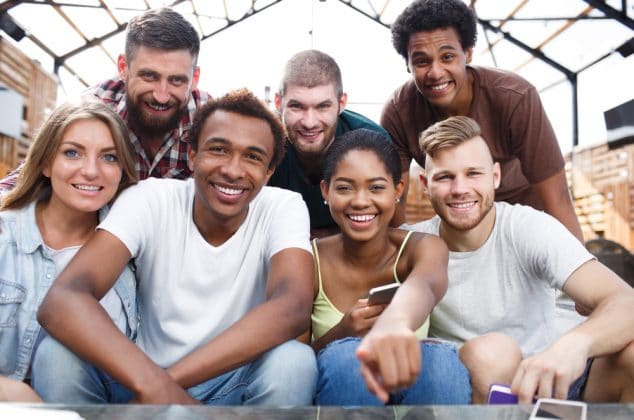131 Best Research Group/Team Names (Curated & Ranked) + Generator

Research is a massive and wide-ranging field, with areas of study ranging between science, creative arts, society, economics, technology, engineering, and more.1
There are also many types of research, including theoretical, applied, exploratory, descriptive, and correlational.2
Research groups tend to spend long hours in labs, in libraries, or behind computers, diligently conducting their studies.
Coming up with an excellent name for your research team can foster a sense of community that will get you through even the most frustrating phases of your project.
Your group name can be as bright and creative as you please. After all, who says academia has to be dull?
See our list of research group name ideas below or scroll past the list for our name generator and tips on creating unique ideas of your own.
Research Group/Team Names
The Research Subculture
Statistically Significant Squad
Selected at Random
Theory Builders & Testers
The Acculturation Network
adaptive cultures
Significant Hypothesis Effects
Arbitrary Zero Points
Aiming for Specifics
Mapping the Mental Model
good for psychological research teams
Narrowing the Scope
Variable Characteristics Unit
Expediting the Review
Team Treatments & Cures
The T-Test Troop
population test
Alpha Level Variables
One Way or ANOVA
reference to the analysis of variance
Triangulation Trends
Digging For Truth
good for an archaeological research team
Pluralistic Approach Trends
Just a Minimal Risk
Error Frequency Analyzers
The Branch of Knowledge
Research Is a Step
Justified Conclusions Crew
Representative Sample Standards
Normal Curve Conformers
Estimating Future Trends
Inclusion Criteria Determined
In the Control Group
Pilot Study Preliminaries
Oh, For Knowledge's Sake!
The Null Hypothesis
Presenting an Answer
Choices Increased
Ecological Fallacies
Our Emic Perspectives
good for cultural research groups
Estimated Parameters
The Maxima Matrix
greater points
Research Paradigms
Distance Between Scores
Checking the Validity
Never Repetitive or Redundant
Random Chance Phenomenons
In Naturalistic Settings
Ratios at Odds
Multi-Faceted Data Set
Meeting the Criteria
The Aggregate Group
reference to total data
Readers, Interpreters, & Evaluators
Anonymity Collective
The Experimental Club
Predetermined Significance Levels
Measure of Variations
Sociolinguistics Network
good for language research teams
Following Linguistic Cues
Sampling Reliability Errors
Experimental Study Participants
Debriefing Participants
Trustworthy Results Indicators
Describe, Organize, and Summarize
Abstract and Concept-Oriented
The Hypothesis Network
Clarity of Purpose
Specific Objectives Squad
Manipulated Variables
Subjects Selected Randomly
General Inferential Statistics
Limitations of Study
Timeline for Completion
The Nonparametric Crew
Intervals and Ratios
Stating the Problems
Parametric Data People
Phenomenological Perspectives
participant’s point of view
Research Variables Grid
Exclusion Criteria Group
Irrelevant Influences
Eliminating Interference
Trent Analysis Troop
Case Study Collective
Indistinguishable Placebos
Epidemiology Study Squad
good for a medical/disease research group
Minesweepers Anonymous
False Conclusions Group
Negative Side Effects
Cause and Effect Factors
The Fishbone Force
reference to the “fishbone” visual analysis tool
Simple Gestalt Principles
reference to concepts of perception
Mental Model Users
Objective Axioms
Written Anecdotal Records
On the Audit Trail
Random Survey Sub-Samplers
Chaos Theory Methodology
Unexplained Error Terms
Path Analysis, Peer Reviews
The Etic View Outsiders
Synchronically Reliable
Two-Tailed Test Team
R-Squared Outcomes
The Sample Relics
Significant P-Values
Pie Chart Participants
Quota Sampling Processors
Devising New Applications
Cultural Insiders Crew
The Common Endpoints
outcome
What Remains Unexplained
Looking for Existence
Expectancy Effect Cues
Reaching the Floor
the lowest limit
The Flowchart Frequency
Foreshadowing Problems
The Gain Score Group
pre-and post-test difference
Gini Coefficient Genies
inequality
P-Value Chances
results due to chance
The Histogram Network
rectangle graph
Life Histories, Research Stories
Post-Test Only Group
Creating New Knowledge
The Uncorrelated Grid
Chi-Square Testers
statistics tests
Average Absolute Values
Multivariate Analysis Matrix
more than one
Point Estimate Statistics
single characteristics
Delimitation Descriptions
narrow scope
Characteristics Can Vary
Dichotomous Variable Cohorts
two categories
Reliability Inter-Raters
consistency measure
Jackknifed Parameters
population estimates
Two Ways or ANOVA
two variables
Research Group Name Generator
How to Create a Good Research Group Name
When creating a research group name, it’s easiest to take inspiration from one of two places: your field of research, or the research process itself.
We used these techniques when creating our list. These are two things that you know well, so you should have no shortage of options or inspiration — and you’ll end up with a more unique name than “[Last name] Research Group” or “[Topic] Research Group.”
You might want to start by creating a list of terms that you find interesting or cool — perhaps even your favorite parts of the research process.
You don’t need to use these words verbatim; just write them down and see if any ideas come to mind that sound as though they could work for a group name.
Research group names can serve a couple of different purposes; they can help shape the vision of your group, encourage teamwork, and provide a sense of identity for the researchers in your group.
Once you have a handful of options, keep these goals in mind while choosing from your list of potential names.
Posts you may want to read next...

81 Best Data Team Names (Curated & Ranked) + Generator

63 Best Science Team Names (Curated & Ranked) + Generator

79 Best Innovation Team Names (Curated & Ranked) + Generator







